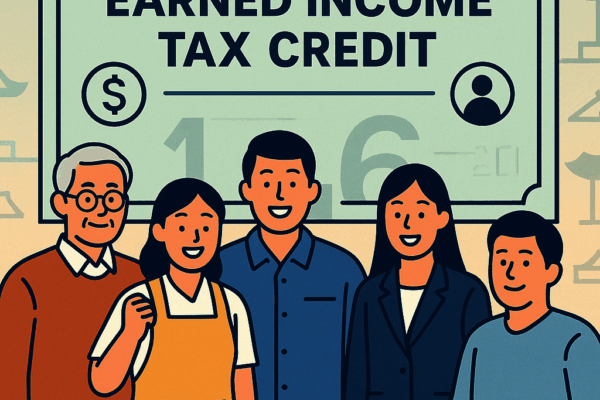The Shock of ‘19.58%’ – Why Did South Korean Voters Set a New Early Voting Record?
On May 29, 2025, nearly 10 million voters surged to polling stations in just one day! A historic high in early voting turnout was recorded. What on earth happened?
On May 29, 2025, a new milestone was set in South Korean political history. On the first day of early voting for the 21st presidential election, over 8.69 million voters showed up at polling stations. This represents an astonishing 19.58% of all eligible voters—the highest figure since the introduction of early voting.
The Reasons Behind the Surge in Early Voting Turnout
- Rising Political Interest
- Voters’ awareness and desire to participate in politics soared.
- Expectations for the election outcome were higher than ever.
- Improved Voting Convenience
- Awareness of the early voting system improved significantly.
- Workers and students found it easier to cast their ballots.
- Regional Differences in Voting Enthusiasm
- The Honam region saw especially high early voting rates (Jeonnam 34.96%, Jeonbuk 32.69%, Gwangju 32.10%).
- Meanwhile, the Yeongnam region (Daegu 13.42%, Gyeongbuk 16.92%) showed comparatively lower participation.
The Significance of Rising Early Voting Turnout
This sharp rise in early voting turnout means more than just a number. It highlights voters’ unprecedented determination to engage politically—a vital indicator of a healthy democracy.
Additionally, the regional turnout gaps reflect differing political leanings and perceptions of the current political climate. These regional disparities are expected to significantly impact the upcoming election results.
What Lies Ahead
Experts predict that this early voting momentum will continue through the main election day. In fact, the prevailing forecast suggests that the turnout will far surpass the previous record of 36.93% set during the 20th presidential election.
Such impressive early voting participation not only showcases voters’ proactive political engagement but also underscores the importance and attention focused on this election. It will be fascinating to watch how developments unfold during the remaining voting period, and to see what impact this extraordinary turnout will have on the final election outcome.
Beyond the Numbers – The True Passion for Elections Revealed by Early Voting Rates
An astounding 86.8% willingness to vote and a 37.4% intention to participate in early voting. What kind of social atmosphere and voter psychology lie behind these impressive figures? Let’s delve deeper into the profound meanings these numbers convey, going beyond mere “record-breaking” statistics.
In-Depth Analysis of Rising Early Voting Rates
- Impact of Political Polarization
- High voter interest fueled by intense rivalry between political parties
- Growing awareness that “my single vote matters”
- Expectations Following Societal Changes After COVID-19
- Increased attention to government policies shaped during the pandemic recovery
- Reflection of strong desires for economic recovery and social stability
- Expanding Political Participation Among Younger Generations
- Enhanced access to political information via social media
- Rising hopes and demands for youth-focused policies
- Effects of Improved Voting Accessibility
- Expansion and convenience of early voting stations
- Preference of employees and students for weekend voting opportunities
The Reality of ‘Passion’: Voices of the Voters
“This time, I really want to make a difference.” – Kim, 28, office worker
“I want to choose carefully for my children’s future.” – Lee, 42, homemaker
These voices illustrate not just high early voting rates but a powerful yearning for change within our society. Voting is no longer a mere duty—it is increasingly seen as an active step toward shaping transformation.
What Rising Early Voting Rates Suggest for the Future
- Potential Formation of a Policy-Focused Election Culture
- High participation may lead to deeper policy discussions
- Increased pressure on candidates to present concrete pledges
- Greater Acceptance of Election Results
- Broad participation could enhance the legitimacy of outcomes
- Positive impact anticipated on social cohesion
- Establishment of a Continued Culture of Political Engagement
- Rising early voter turnout may become a lasting trend rather than a one-time spike
- Expectations for a more mature civil society
The rise in early voting rates holds significance far beyond the numbers. It reflects our society’s fervent desire for change, evolving perceptions of political participation, and citizens’ proactive commitment toward a better future. It will be fascinating to see how this momentum influences election outcomes and shapes the transformation of our society moving forward.
Temperature Differences on the Map – The Secret Behind Hot Honam and Cold Daegu Early Voting Rates
Jeonnam 34.96% vs. Daegu 13.42%. On the same election day, the voter enthusiasm starkly contrasts by region. What is the significance of the “political geography” unfolding at the early voting stations? The gap in early voting rates between regions in this 21st presidential election holds meaning far beyond mere numbers.
The Fiery Passion of Honam and What Lies Beneath
The high early voting rate in Honam, especially Jeonnam, vividly reflects the political character of the area. Traditionally a progressive stronghold, Honam showed intense anticipation and willingness to participate in this election. Support for candidates aligned with local sentiments and a fervent desire for regime change likely fueled the rush to the polling booths.
Daegu’s Cool Response: What’s the Issue?
In contrast, Daegu’s low early voting rate seems to be the result of multiple intertwined factors. As a region with strong conservative leanings, dissatisfaction with the current government may have led paradoxically to political apathy. Additionally, major candidates’ campaign strategies in the area might have prioritized voting on the actual election day rather than early voting.
The Message Behind Regional Early Voting Rate Disparities
This stark contrast in early voting rates reveals deeper layers of Korean politics beyond simple voter turnout differences:
- Political Polarization: The clearly divided voting behaviors by region indicate that political polarization remains intense in Korean society.
- Differences in Voter Mobilization: Variations in regional support bases and the ability of parties and candidates to mobilize voters are reflected in early voting rates.
- Access to Information and Participation Culture: Disparities in awareness, accessibility of early voting, and local political engagement cultures likely contributed to these outcomes.
Challenges to Achieve Balanced Political Participation
To bridge the gap in early voting rates across regions, the following efforts are essential:
- Providing balanced election information and education nationwide
- Tailored campaigns encouraging voting in low-participation areas
- Strategies from parties and candidates to engage voters without regional bias
The regional differences in early voting rates carry significance beyond statistics. They serve as a vital indicator reflecting the political landscape and voter consciousness in our society. Going forward, reducing these gaps and fostering balanced political participation across the country will be a crucial challenge.
Record-Breaking Forecast – How High Will It Go? The Future of Early Voting Turnout
The early voting turnout for the 21st presidential election shattered all previous records from day one, reflecting the fervent interest of voters. All eyes are now on how high the final early voting turnout will climb. With widespread expectations that it will surpass the 36.93% record set during the 20th presidential election, lively discussions are underway analyzing how this surge in early voting enthusiasm might impact the overall election.
The Significance and Expectations Behind the Rising Early Voting Turnout
Experts analyze that this rise in early voting turnout carries several important implications beyond just the numbers:
Heightened Voter Engagement Consciousness: The soaring early voting rate signals that voters’ willingness to participate politically is stronger than ever before. This underlines the nation’s intense interest in the election’s outcome.
Active Participation of the Younger Generation: Particularly notable is the surge in early voting among voters in their 20s and 30s. Their votes are expected to play a decisive role in shaping the election results.
Changing Voting Patterns: As more voters opt for early voting, the traditional pattern focused on election day voting is shifting. This could have a significant impact on future campaign strategies and polling methodologies.
How Early Voting Turnout Could Influence Election Results
A high early voting turnout is expected to influence the election results in the following ways:
Increase in Overall Voter Turnout: High early voting participation likely leads to a boost in total voter turnout, contributing to greater legitimacy and representativeness of the election results.
Discrepancies with Opinion Polls: The preferences of early voters may diverge from those indicated by existing opinion polls, raising the possibility of unexpected outcomes.
Shifts in Campaign Strategies: The surge in early voting will affect how candidates design their campaign strategies, placing greater emphasis on activities during the early voting period.
Changes Brought About by Youth Participation
The energetic involvement of young voters during this early voting period is drawing particular attention, heralding changes such as:
Narrowing the Political Awareness Gap Between Generations: The high turnout among young voters could help bridge the political awareness gap that has traditionally existed between age groups.
Emergence of New Policy Agendas: Issues important to the younger generation—like youth unemployment and housing—are poised to take center stage in policy discussions.
Transformation of Political Culture: With social media fueling information sharing and vibrant debates, a more open and participatory political culture is expected to flourish.
The rise in early voting turnout reflects more than just increased numbers; it signifies our society’s political maturity and a desire for change. Watching how high the final early voting turnout will reach and what impact it will have on the election results will be this presidential election’s most captivating storyline.
Remaining Homework – Increasing Early Voting Rates and Democracy Everyone Can Join
Voter turnout trends act as a thermometer for the health of democracy. The recent rise in early voting rates is encouraging, yet significant regional disparities and low participation among certain voter groups remain realities. What changes are necessary to move from areas with the lowest turnout toward a future where everyone participates? Here are proposed solutions to broaden electoral engagement.
- Strengthening Voter Education
- Raising awareness of the importance and impact of voting
- Expanding civic education programs through schools and local communities
- Providing easy and engaging election information via online platforms
- Improving Accessibility
- Increasing polling stations in areas with poor transportation
- Introducing mobile polling stations to support voters in remote areas
- Enhancing facilities for people with disabilities and the elderly
- Flexibility in Voting Time and Methods
- Considering extensions of the early voting period
- Discussing the adoption of electronic voting systems
- Designating weekend voting days to boost voter convenience
- Incentive Programs for Participation
- Offering modest benefits to voters (e.g., cultural facility vouchers)
- Launching ‘Vote Encouragement Campaigns’ in partnership with companies
- Customized Promotional Strategies
- Strengthening targeted marketing by age and region
- Engaging younger voters through social media and influencers
- Developing tailored messages reflecting local characteristics
- Enhancing the Quality of Policy Debates
- Expanding meaningful policy debates among candidates
- Establishing voter-participation systems for evaluating pledges
- Strengthening fact-checking to support voters’ rational decision-making
- Improving Voting Culture
- Establishing a dedicated ‘Voting Day’ to create a societal atmosphere
- Operating programs encouraging family-based voting participation
- Expanding participatory campaigns like voting selfie events
Raising overall voter turnout, including early voting, is not a challenge that can be resolved overnight. However, through continuous effort and innovative approaches, we can foster a voting culture where every voter participates voluntarily. Voting is the flower of democracy, a citizen’s right and duty. For a better tomorrow that we all build together, it is time to cherish the value of every single vote and lower barriers to participation.




